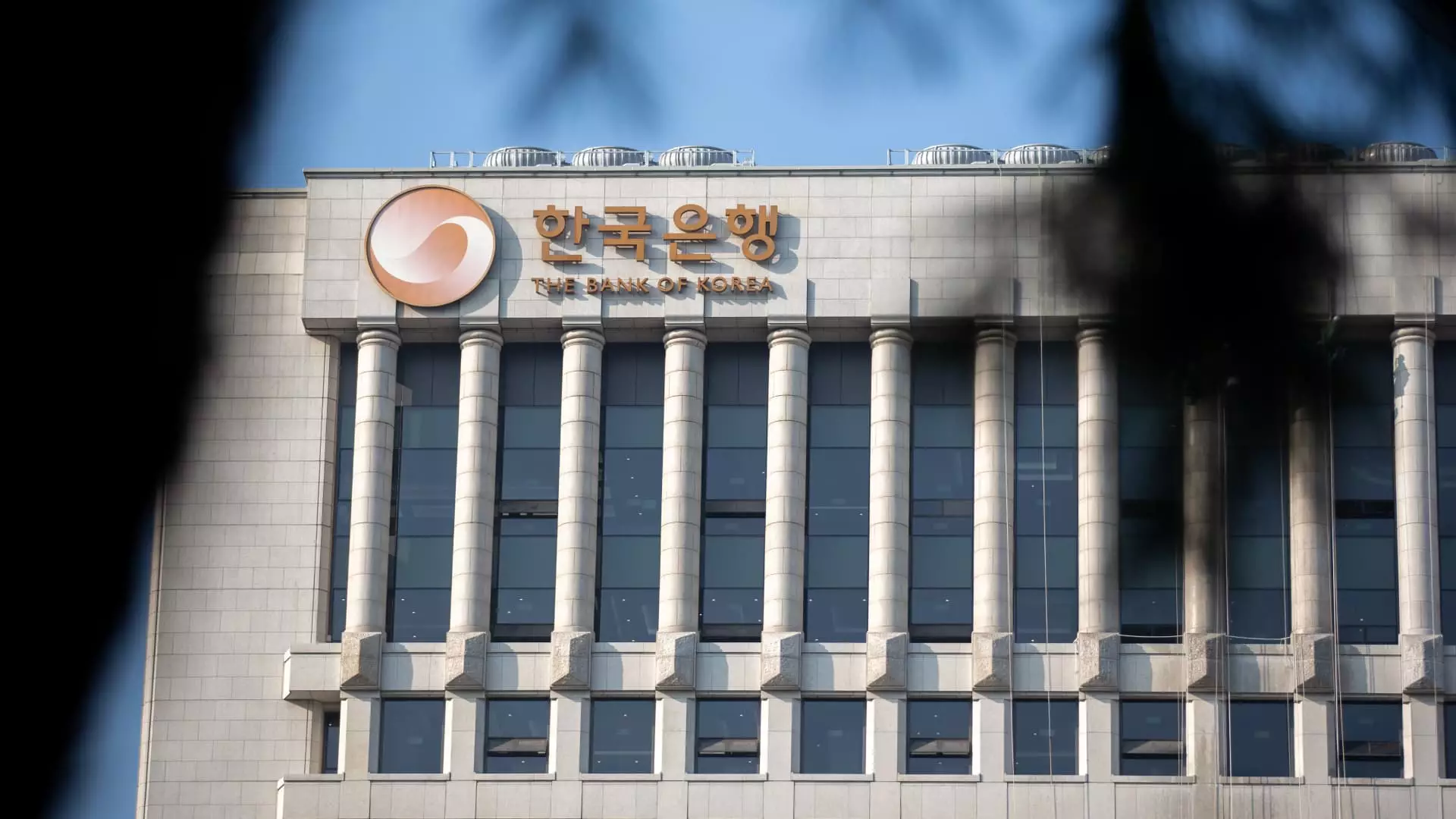On Thursday, South Korea’s central bank made a bold yet troubling decision, slashing its policy interest rate by 25 basis points. The cut brought the rate down to 2.5%, the lowest level seen since August 2022. Economists had anticipated this reduction, which marks the fourth cut within six monetary policy meetings. But one must ask: does this action truly reflect proactive economic policy or merely a desperate attempt to stave off an inevitable crisis? The reality is that South Korea finds itself navigating uncharted waters filled with a toxic mix of political instability and economic miscalculations.
The rationale behind the Bank of Korea’s (BOK) decision aligns with a grim forecast for economic growth, which has stagnated dramatically. The repeated interest cuts seem less like a reflection of a normal economic cycle and more a response to a fraught political landscape—exacerbated by former President Yoon Suk Yeol’s disastrous power grab attempt that left citizens questioning their leadership. Indeed, the very essence of governance in South Korea seems to be waning under the weight of ineptitude.
Political Turbulence: The Bigger Picture
Political turmoil in South Korea isn’t just a temporary setback; it is symptomatic of deeper systemic issues. The impeachment of Yoon and the subsequent snap election scheduled for June 3 are just symptoms of a much larger malaise that has been festering for years. Such instability has paralyzed decisive leadership at a time when timely economic policy is critical. Voters are not simply turning out to choose a new president; they are seeking deliverance from a political crisis characterized by alarming irresponsibility and profound misjudgment.
Furthermore, the looming cloud of trade tensions with the Trump administration, which imposed a considerable 25% reciprocal tariff on South Korean goods, adds another layer of complexity. These tariffs, initially suspended for a mere 90 days, have left industry leaders scrambling for a solution that appears increasingly unattainable with each passing day. The prospect of negotiations coming to fruition before the July 8 deadline seems almost a forlorn hope, with trade officials themselves doubting the feasibility given the impending electoral circus.
Economic Consequences: A Contraction with No End in Sight
Economic indicators paint not just a bleak picture, but a stark warning: South Korea’s GDP unexpectedly contracted by 0.1% in the first quarter of this year, a worrying inception to what could ultimately evolve into a full-blown recession. This contraction marks the first downturn since the end of 2020, and the ramifications are far-reaching. Economists like Gareth Leather from Capital Economics make it clear that although a new president may usher in the fiscal stimulus necessary to invigorate consumer spending, this is not a guarantee of recovery. The ongoing crises within the property market and disruptions in export activities render any potential boost utterly futile.
What’s alarming is the BOK’s significantly revised GDP forecast for the full year. Reducing it from 1.5% to a meager 0.8% signifies more than just a stumbling economy; it reveals the underpinnings of a fragile state struggling to maintain competitive viability in a turbulent geopolitical landscape.
Market Trends: Mixed Signals
In the immediate aftermath of the interest rate cut, South Korea’s Kospi stock index showed signs of life, jumping by 1.25%. Such an uptick could be misleading, trapped in the optimism that often accompanies monetary easing. Nevertheless, the South Korean won weakened against the U.S. dollar, trading at 1383.40. A currency decline amidst a protective interest rate cut is a clear signal that investor confidence is shaky at best. This juxtaposition raises more questions than it answers: Can the market rise in the face of overwhelming socio-economic uncertainty? Or is it merely a brief respite before the next wave of discontent washes ashore?
South Korea’s predicament is an intricate tapestry woven with political disarray and economic fragility. The series of interest rate cuts serve as a cursory bandage over a gaping wound, leaving citizens and markets alike in an extraordinary state of apprehension. The nation stands at a critical juncture where leaders must not only address the immediate economic challenges but also nourish a political ecosystem that breeds stability and purpose.


Leave a Reply